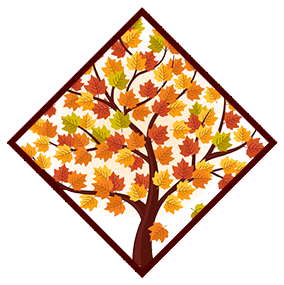TL;DR: The Rise of Curved Furniture
Curved furniture is back in a big way, and it’s here to stay. Rooted in timeless design but refreshed for today’s interiors, curves offer elegance, warmth, and flow. In this article, you'll learn:
-
Why curves feel more welcoming and sophisticated than sharp lines
-
How curved wood tables can bring softness and movement to a room
-
Where to use curves to complement existing pieces without a full redesign
-
How organic shapes signal luxury and craftsmanship
-
Simple ways to incorporate curves in your home, starting with your table
Curves Are In Demand
At New England Table Company, we have seen a jump in requests for round tables and for rounder edges on traditional, rectangular tables. We made the round table shown here last year, but have had requests for many more since then. We recently designed a rectangular extension table that included corners with a 2" radius (rather than the normal 1/8" - 1" range).
We also read (a lot) and have seen this trend reflected in catalogs and industry magazines like Architectural Digest. So, if you are considering a round table or adding curves to your interior design, you are on the right track. Read on to see why and how to incorporate this style in your home or office.
The Curve Comeback: What It Means for Interior Design
Interior design is moving away from cold minimalism and toward something more human: warmth, comfort, and intentionality. Curved furniture is at the center of that shift. Gone are the days of sharp corners dominating every room. In their place, we’re seeing soft, sculpted forms—pieces that invite you in and add a sense of flow.
Curved tables, in particular, offer a beautiful counterpoint to all the straight lines in a home—from baseboards and door frames to cabinetry and flooring. A round or oval table instantly creates a more relaxed, intimate space—without compromising on style.
Why Curves Feel Like Comfort
There’s something inherently calming about curves. Rounded edges feel approachable and safe. In visual terms, curves soften a space. In practical terms, they guide the eye and encourage movement. A round dining table, for example, naturally draws people together, making meals feel more personal. A coffee table with an organic shape can bring cohesion to a room filled with right angles, adding warmth without clutter.
While curved sofas and headboards are part of this trend, the real opportunity—especially for homeowners who already have traditional furnishings—is to use curved wood pieces as accent anchors. A sculpted table or subtly rounded edge detail is often all it takes to introduce softness and flow.
Craftsmanship You Can Feel
Curved wood furniture isn't just beautiful—it requires skill. Unlike mass-produced pieces cut at right angles, curves demand patience, precision, and a deep respect for the material. Every bend, arc, and rounded edge tells a story of handwork.
When crafted from solid hardwood, a curved table becomes more than furniture—it becomes an heirloom. The tactile sensation of running your hand along a smooth, natural curve is something mass production can’t replicate. It signals luxury, even when the design is simple.
Where to Add Curves in Your Home
You don’t need to redesign your entire home to embrace curved furniture. In fact, a single well-placed piece can transform a space. Here’s where curves work especially well:
Dining Room
A round or oval table is the classic starting point. It encourages conversation and makes even a small dining area feel open and balanced. For homes with straight-backed chairs and rectangular sideboards, a curved table creates contrast and softness.
Living Room
Already have a sectional or straight sofa? A sculptural coffee table with curved lines can anchor the room and provide an elegant visual break. Pair it with a circular rug or accent piece for cohesion.
Entryway or Nook
Curved console tables or accent tables in smaller areas bring flow and beauty without dominating the space. These pieces work well near staircases or under arched windows where symmetry matters.
Design Flexibility Across Styles
The beauty of curved wood furniture is that it works across a range of styles:
-
In modern homes, it adds movement and interest
-
In traditional interiors, it balances formality with softness
-
In coastal or organic spaces, curves echo the natural world
Best of all, curves mix well with straight lines. You don’t need to commit to one or the other. A thoughtfully placed round table next to angular architecture brings intentional contrast—the kind of design decision that signals confidence and taste.
Final Thoughts: A Return to the Human Touch
Curved furniture is more than a trend. It’s a return to shape, comfort, and craftsmanship. In a world of sharp corners and rushed production, a curved wood table is an invitation—to slow down, to gather, and to appreciate beauty that flows.
If you're considering adding curves to your space, start with the heart of your home: the table. Whether it’s a dining table designed for meaningful meals or a coffee table that brings a room together, a well-crafted curve can make all the difference.


